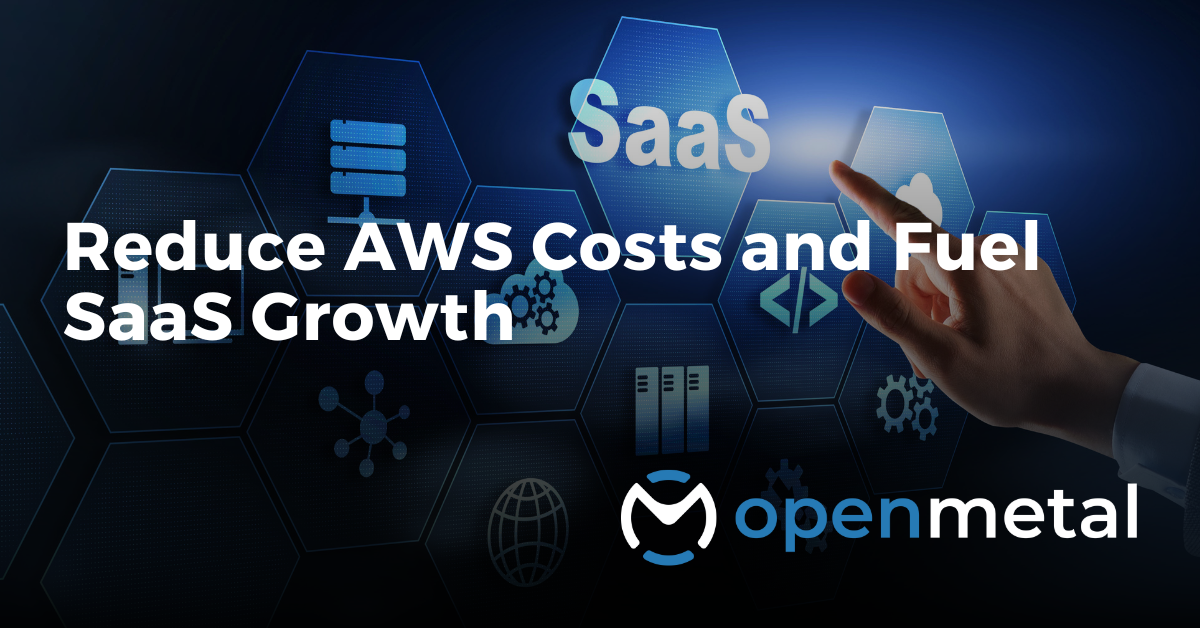Businesses are constantly striving to optimize their operations and deliver high-quality software products in record time. This has led to the rise of DevOps, a methodology that combines development and operations to foster collaboration, efficiency, and continuous improvement.
But, if your organization is new to exploring the possibilities with DevOps, it may be a challenge to rethink and rework what you’re currently doing. So how can you effectively create a DevOps culture within your workplace, with as little time + money wasted as possible?
Let’s go through some practical tips to help you cultivate a collaborative and innovative environment that embraces the power of DevOps.
What Does a DevOps Culture Look Like?
An efficient and effective DevOps culture improves the software development and delivery process. A DevOps culture is one of collaboration and communication between development and operations teams, with a shared focus on delivering high-quality software quickly and reliably. Teams take advantage of all the tools and knowledge available and share resources to make development and delivery a streamlined process.
Some of the key ingredients of a DevOps culture include:
- Automation: DevOps teams automate as many tasks as possible to free up their time to focus on more strategic work.
- Continuous integration and continuous delivery (CI/CD): DevOps teams use CI/CD to automate the software development and delivery process, from code commit to production deployment.
- Infrastructure as code: DevOps teams use infrastructure as code to manage their infrastructure in a consistent and repeatable way.
- Monitoring and observability: DevOps teams monitor their systems and applications closely to identify and troubleshoot problems quickly. They also set and monitor goals to work towards constant improvement.
- Collaboration and communication: DevOps teams break down silos between development and operations, and encourage collaboration and communication throughout the software development lifecycle.
How to Implement a DevOps Culture
To create a DevOps culture, organizations need to invest in the right tools and technologies, implement the right practices, and foster a workplace of collaboration and communication.
This is often not a fast or “set it and forget it” process. As with any organizational change, it takes buy-in from leadership and involved teams, and continual review and optimization. (Kind of like software development!)
Here are a few tips on how companies can get started in creating a productive DevOps culture, whether you’re a leader hoping to implement it in your business, or a team member pitching this methodology:
Start by getting buy-in from leadership
DevOps culture requires a change in mindset from both development and operations teams. It’s important to have leaders on board to ensure that everyone is ready and willing to put efforts towards the new path.
If you’re an individual contributor or part of the team pushing for a DevOps culture change, it’s wise to present pros and any potential cons to the decision maker(s). Why should the business invest time and resources into this goal?
Here are a few common benefits of introducing a DevOps culture you can start with:
- Faster time to market: DevOps teams can deliver software to market faster because they are able to automate tasks, streamline workflows, and break down silos between development and operations.
- Improved quality: DevOps teams focus on quality throughout the software development lifecycle. This helps to reduce the number of bugs that are released to production.
- Increased reliability: DevOps teams can deliver more reliable software because they are focused on quality throughout the software development lifecycle.
- Reduced costs: DevOps teams can help to reduce costs by automating tasks, optimizing infrastructure usage, and reducing the number of failed deployments.
- Improved customer and employee satisfaction: DevOps teams can improve customer satisfaction by delivering high-quality software quickly and reliably, and by being responsive to customer feedback. Employee and team morale improves when there is productive collaboration and everyone feels that they’re working well together towards the same goal.
If you’re a leader within your organization, understand that DevOps is not just a set of tools and practices; it’s a mindset. Once you’ve decided to take this path, a few ways you can support your team include:
- Encouraging your team members to embrace a culture of continuous learning and improvement.
- Providing them with opportunities to attend conferences, workshops, and training sessions.
- Encouraging the sharing of knowledge and expertise within your organization through lunch-and-learn sessions, internal wikis, or a dedicated Slack channel.
By nurturing a learning environment, you will empower your team to stay up-to-date with industry trends and best practices, ultimately enhancing their skills and productivity. Show that you’re committed to the DevOps culture development, and find opportunities for your team to help build it.
Break down silos
One of the key principles of DevOps is the breaking down of silos between different teams, such as development, operations, and QA.
- Take full advantage of cross-functional collaboration. Implement regular communication and knowledge sharing between involved groups. Different teams bring valuable insights and viewpoints that can help tackle challenges in unique ways.
- Set up regular meetings or stand-ups where team members can discuss their progress, challenges, and ideas. Make sure these meetings are valuable by adhering to an agenda and ensuring everyone knows the purpose and discussion points beforehand. Stick to a “fast feedback” process, where decision makers frequently provide approvals or suggestions to keep projects from being stalled.
- Take advantage of project management tools like Jira or Asana. This is especially useful for larger teams, but it’s helpful for just about any organization. When there are multiple departments working towards goals, these tools ensure that everyone knows what they’re responsible for and leaders can keep track of progress.
By promoting open lines of communication and solid organization, you’ll create a more cohesive and efficient workflow, eliminating bottlenecks and potential misunderstandings.
Automate tasks
Automation lies at the heart of DevOps practices. Encourage your team to identify repetitive and time-consuming tasks that can be automated. Whether it’s deploying code, running tests, or provisioning infrastructure, automating these processes will not only save time but also reduce the chances of human error.
Continuous integration (CI) and continuous delivery (CD)
Continuous integration (CI) and continuous delivery (CD) tools can automate the build, test, and deployment process. Examples include Jenkins, CircleCI, and Travis CI. These tools can be used to automate tasks such as:
- Compiling code
- Running unit tests
- Building and deploying artifacts to staging and production environments
Configuration management
Configuration management tools can automate the configuration and provisioning of infrastructure. Examples include Ansible, Chef, Puppet, and SaltStack. These tools can be used to automate tasks such as:
- Installing software
- Configuring servers and networks
- Managing user accounts and permissions
Container orchestration
Containerization tools can automate the packaging and deployment of applications. Examples include Kubernetes, Docker Swarm, and Amazon Elastic Container Service (ECS). These tools can be used to automate tasks such as:
- Building Docker images
- Deploying containers to Kubernetes clusters
Infrastructure as code (IaC)
Infrastructure as code tools can automate the provisioning and management of infrastructure using code. Examples include Terraform, CloudFormation, and Pulumi. These tools can be used to automate tasks such as:
- Creating and configuring AWS resources
- Provisioning and managing Azure resources
- Managing Google Cloud resources
Monitoring and logging
Monitoring and logging tools can automate the collection and analysis of system data. Prometheus, Grafana, and ELK Stack (Elasticsearch, Logstash, and Kibana). These tools can be used to automate tasks such as:
- Collecting metrics from servers and applications
- Generating alerts based on predefined thresholds
- Storing and analyzing logs
DevOps teams can also automate tasks using custom scripts and tools, such as in general-purpose programming languages like Python and Bash. This can be a good option for tasks that are not well-suited to existing tools, or for tasks that need to be integrated with specific systems and processes.
Utilize a cloud IaaS test and learning environment
Cloud IaaS can offer a number of benefits for DevOps teams. If you don’t have one already, we recommend investing in a cloud environment for teams to both learn and create within, along with testing new functionality before it goes live.
This brings many advantages for DevOps teams including:
- Support for a wide range of testing frameworks and tools: Cloud IaaS providers offer a wide range of pre-configured testing environments and tools, which can save DevOps teams time and effort. Test code in a variety of different environments and configurations to ensure that it is working as expected.
- Easy integration with CI/CD pipelines: Cloud IaaS environments can be easily integrated with CI/CD pipelines, which can help to automate the testing and deployment process.
- Access to the latest technologies: Cloud IaaS providers offer access to the latest hardware and software technologies, which can help DevOps teams to improve the quality of their testing and learning activities.
- Accessibility: Cloud IaaS environments can be accessed from anywhere with an internet connection, which makes them ideal for remote and distributed DevOps teams. This can help to improve collaboration and productivity.
For leadership, you may be wondering why shelling out for and maintaining separate cloud IaaS environments is worthwhile. We assure you, it is in many ways! Including:
- Speed and agility: Cloud IaaS environments can be provisioned and scaled on demand, which allows DevOps teams to quickly and easily create and deploy test environments. This can help to accelerate the software development lifecycle and reduce time to market for new products and features.
- Cost savings: Cloud IaaS environments can be more cost-effective than traditional on-premises infrastructure, especially for DevOps teams that need to create and maintain multiple test environments. This is because cloud providers typically charge for resources on a pay-as-you-go basis, so teams only pay for the resources they need when they need them.
- Increased efficiency: Cloud IaaS environments can help DevOps teams to increase their efficiency by automating tasks such as provisioning and configuration. This can free up DevOps engineers to focus on more important tasks, such as developing and testing new features.
- Reduced risk: Cloud IaaS environments can help DevOps teams to reduce the risk of errors and outages by providing a sandbox environment where they can test new changes before deploying them to production.
Create a culture of learning and experimentation
Productive DevOps teams are constantly learning and experimenting with new tools and technologies. This helps them to improve their workflows and deliver software more effectively.
DevOps culture thrives on innovation and experimentation. Teams need to feel comfortable taking calculated risks and exploring new technologies or methodologies.
Leaders should create a safe environment where failure is seen as an opportunity to learn and grow. Foster a blameless culture, where individuals are encouraged to share and analyze their failures openly. By celebrating successes and embracing failures, you’ll inspire your team to think outside the box and constantly push the boundaries of what’s possible.
And don’t forget to measure your results! Have recent changes improved development time or accuracy? Have customer or employee satisfaction scores increased? Create SMART goals and track your progress.
What are SMART goals?
- Specific: Avoid vague wording like “better results”. Use things like percentages and numbers to show exactly what you hope to achieve.
- Measurable: If the goal can’t be measured, it can’t be tracked and improved. Ensure you’re able to track the previous and test results for your goal.
- Achievable: Is this goal actually attainable for the team? Goals should be challenging, but also realistic based on past data and team capabilities.
- Relevant: Will this goal be worthwhile for you to work towards? Is it improving something relevant to your DevOps culture? Avoid vanity metrics that don’t truly have a bearing on your success.
- Time bound: Goals must have a deadline. Look at past work and results to decide on a realistic timeframe.
Wrapping Up
Have we convinced you to look into creating a DevOps culture at your workplace? Hopefully this article has given you some actionable tips and tools on how to make it a reality.
As businesses always look to do more with less, an efficient DevOps culture ensures that teams are as productive as possible, while still maintaining employee and customer morale. Previously-siloed employees come together to work towards a common goal, while contributing their knowledge and different viewpoints. We think that’s a worthwhile endeavor for any modern business.
Read More on the OpenMetal Blog

Key Considerations When Choosing Infrastructure for Hosting Kubernetes Workloads
Many organizations are using Kubernetes to containerize their workloads because of the numerous benefits. But running Kubernetes workloads on the wrong type of infrastructure can lead to a range of undesirable consequences.

Best Tools For Deploying Kubernetes On OpenStack
In the realm of deploying Kubernetes on OpenStack, Rancher stands out as the best tool available. Its comprehensive feature set, ease of use, and hybrid capabilities make it an excellent choice for organizations seeking to manage Kubernetes clusters seamlessly.

Public Cloud Waste at 28%: Time to Consider On-Demand Private Cloud as an Alternative?
As businesses realize the growing costs of cloud, it becomes even more important to find alternative solutions. Learn more about the benefits of private cloud, factors that make organizations hesitant about the move, on-demand private cloud as the true…




































